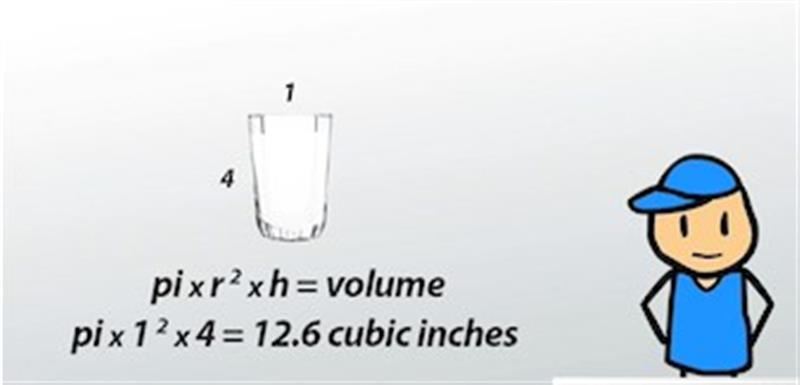Volume Examples
Next, there's volume. Like going from perimeter to area, going from area to volume means adding a layer. In this case, it's a third dimension. Instead of squaring the scale factor, guess what? We're going to cube it! So, the change in volume is equal to the scale factor cubed. Cubing a number is raising it to the third power. So, if you remember that volume involves three dimensions, you can remember to cube the scale factor. Let's try this out.
Here's a rectangular prism:
The volume of this rectangular prism equals 24 cubic inches.
Let's make this interesting. Let's say it's a box of cookies. It's 4 inches by 2 inches by 3 inches. The volume of a rectangular prism will be length times width times height. So, its volume is 4 x 2 x 3, or 24 cubic inches. That's not going to hold a lot of cookies, even if they're small. So, let's scale it! Let's use a scale factor of 3.
Here's our new box:
This is the box of cookies scaled by three.
It's 12 by 6 by 9. The volume of this box will then be 12 x 6 x 9, which is 648 cubic inches. Now that box will hold a lot of cookies. We just need some milk.
Oh, but what about the change in volume? I said it's the scale factor cubed. But, what's 3 cubed? It's 27. And, what happens if we multiply the original volume, 24, times 27? Yep. It's 648.
But, what about that milk? Let's do one more volume example. Here's a kid's size glass of milk:
kkk

The volume of this glass of milk is 12.6 cubic inches.
The volume of a cylinder is pi times r^2 times h, where r is the radius of the circle on the top and h is the height. This glass has a radius of 1 inch and a height of 4 inches. So, its volume is pi x 1^2 x 4, or about 12.6 cubic inches.
We have a huge box of cookies, so we need a bigger glass of milk. What scale factor should we use? Since scale factors are cubed with volume, remember that even a small change will have significant ramifications.
Let's try a scale factor of 2. That will make our radius 2 inches and our height 8 inches. That doesn't seem unreasonable, right? Now, we don't need to do the volume formula. We can just cube the scale factor. 2^3 = 8. If our original volume was 12.6, then our new volume is 12.6 x 8, or 101 cubic inches. For those of you who don't think of your milk in cubic inches, that's about 1.75 quarts of milk. Holy cow!